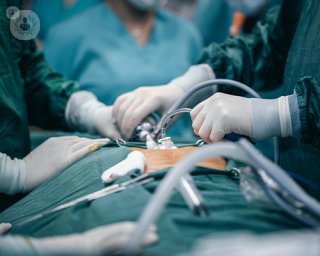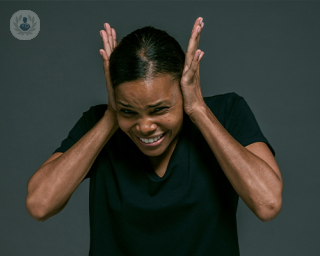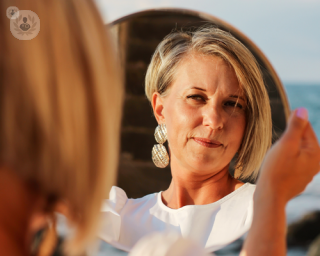Menopause is a natural stage of life that marks the end of a woman’s reproductive years, typically occurring between the ages of 45 and 55. It brings about significant hormonal changes that can result in a variety of physical and emotional symptoms. With proper assessment and expert care, many women can navigate menopause more comfortably, minimising the impact on their daily lives and overall health.
586 Articoli medici su Ginecologia e Ostetricia Più di 7477 articoli redatti dai migliori specialisti

Redazione internazionale di Top Doctors
Ginecologia e Ostetricia
Laparoscopic hysterectomy: What you need to know
Laparoscopic hysterectomy is a modern, minimally invasive surgical procedure to remove the uterus, offering a faster recovery and fewer complications compared to traditional open surgery. This article provides an expert insight into laparoscopic hysterectomy, discussing why it is carried out, how it is performed, and what recovery involves.

Redazione internazionale di Top Doctors
Ginecologia e Ostetricia
What we should know about fibroids
In this article, renowned consultant obstetrician and gynaecologist, Mr Nilesh Agarwal, describes how fibroids are diagnosed, managed, and treated.
All about fertility and preconception testing
Here, highly reputable consultant gynaecologist, Miss Srividya Seshadri, explains how beneficial preconceptive care can be for couples wondering whether or not their fertility could be a problem in their journey of having a child.

Redazione internazionale di Top Doctors
Ginecologia e Ostetricia
Navigating the reproductive journey: essential health milestones for women
Pregnancy is an exciting adventure with a lot to look forward to, but before you get the baby’s room painted and the crib built, the baby’s first dwelling needs to be in tip-top shape – your body. In this guide, a highly-regarded consultant gynaecologist explains the health milestones for prospective mothers to aim for before they’re prime for pregnancy.

Dr Claire Phipps
14.11.24
Ginecologia e Ostetricia
A guide to premenstrual dysphoric disorder
Premenstrual dysphoric disorder, also known as PMDD, is a condition that manifests before the menstrual period and is characterised by its symptoms of severe psychological and physical distress. It can occur anywhere between two weeks up to a few days before the period, and during the period it is much milder. It is related to premenstrual syndrome (PMS) and premenstrual tension (PMT), but is notably quite extreme in comparison to those two. In this article, consultant gynaecologist Mr Narendra Pisal explains clearly what PMDD is and how to handle it.

Redazione internazionale di Top Doctors
Ginecologia e Ostetricia
Every menstrual cycle, just like every body, is different. They might differ in duration, in the length of time between periods, in how much blood is shed, what the accompanying symptoms are. Normally, the length of the cycle is between 21 to 42 days. The standard of an “irregular” period will be based on what is “normal” for each individual, as they are determined by age, weight, contraceptive methods, if there have been previous pregnancies, breastfeeding status, and proximity to menopause. This is because these factors affect hormone levels, which may disrupt “normal” periods. In this article, a consultant gynaecologist and laparoscopic surgeon goes over some of the reasons why a period may be irregular.

Dr Sidra Hasan
13.11.24
Ginecologia e Ostetricia
Navigating menopause: Empowering women with personalised care and modern solutions
Here to discuss how hormone replacement therapy can help certain women experiencing menopause and its related symptoms is esteemed Birmingham-based GP, Dr Sidra Hasan.

Redazione internazionale di Top Doctors
Ginecologia e Ostetricia
Understanding endometriosis: Symptoms, causes, and treatment options
In one of our latest articles here, renowned consultant obstetrician and gynaecologist, Mr Ilyas Arshad, provides a comprehensive overview of endometriosis.

Mr Mohan Kumar
12.11.24
Ginecologia e Ostetricia
Living with fibroids: Is it safe?
Uterine fibroids, or leiomyomas, are non-cancerous growths which develop in or on the uterus. Fibroids are common, particularly in women of reproductive age, and can vary greatly in size and number. While they are typically benign and not life-threatening, fibroids can cause discomfort and complications depending on their characteristics and location. Here’s an overview of what it means to live with fibroids and what factors to consider for your safety and well-being.
Articoli medici più letti
- Understanding 4 stages heart failure
- Ascessi del dente e gomma bolle: qual è la differenza?
- Vagus nerve dysfunction: what is it and what are the main symptoms?
- The truth about bulging hand veins
- Popping, clicking or crackling in the ear
- Pancreatitis: can the pancreas heal itself?
- COVID and loss of sense of smell (anosmia)
- Testicular pain: when to see a specialist
- What is a paroxysmal cough?
- Dupuytren’s contracture: the Viking disease explained
Articoli medici rilevanti







